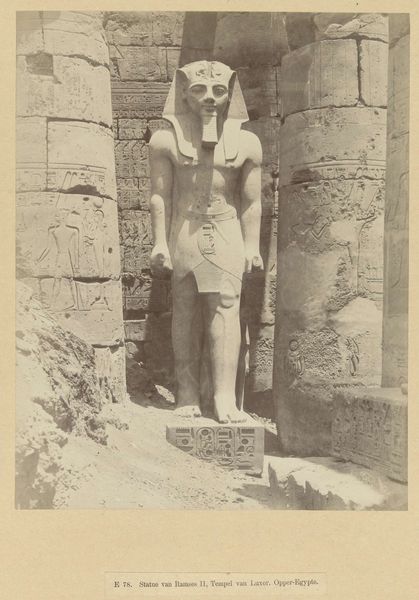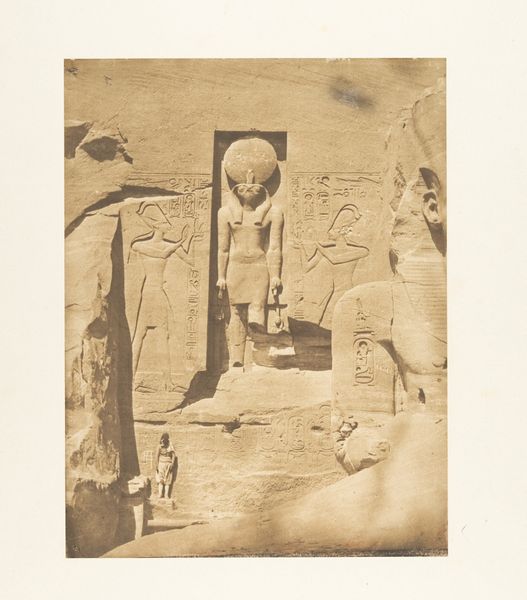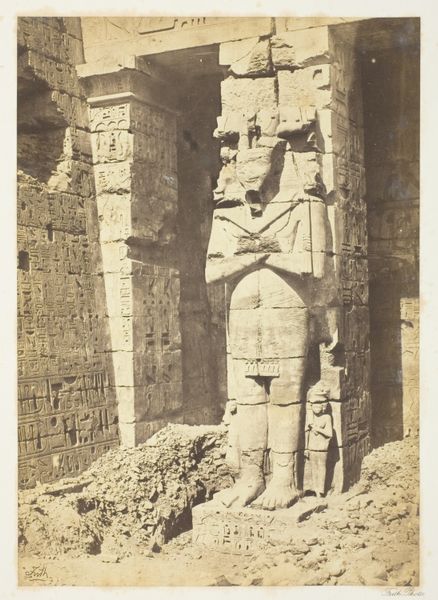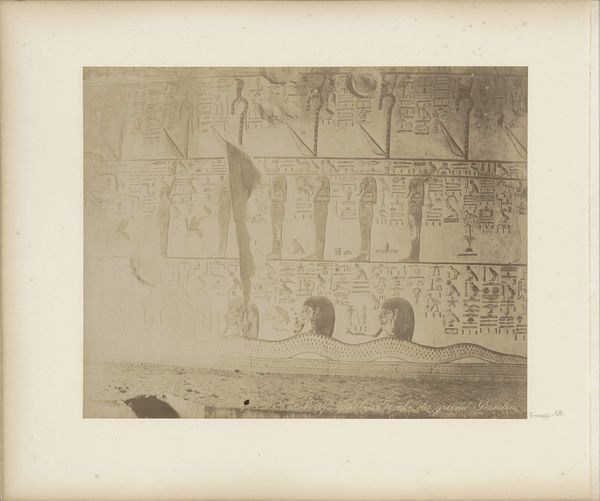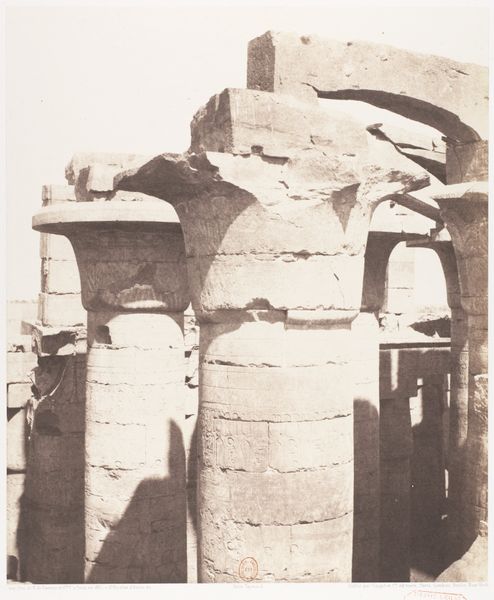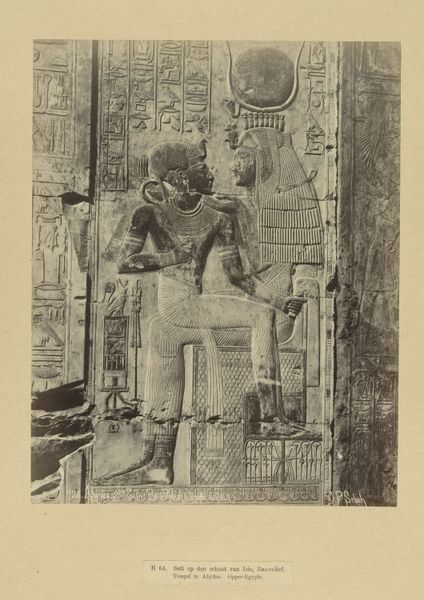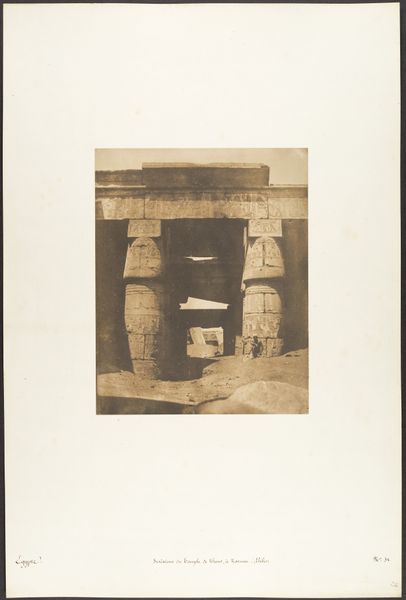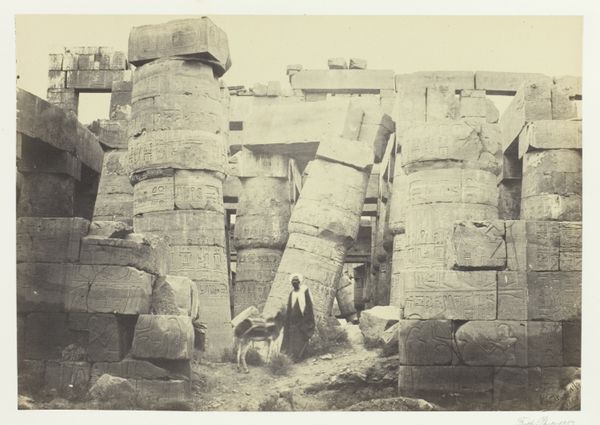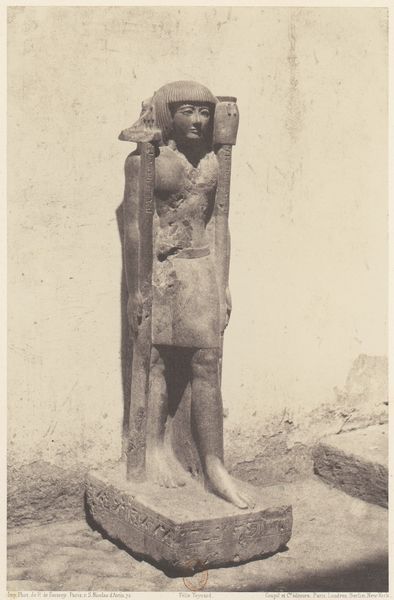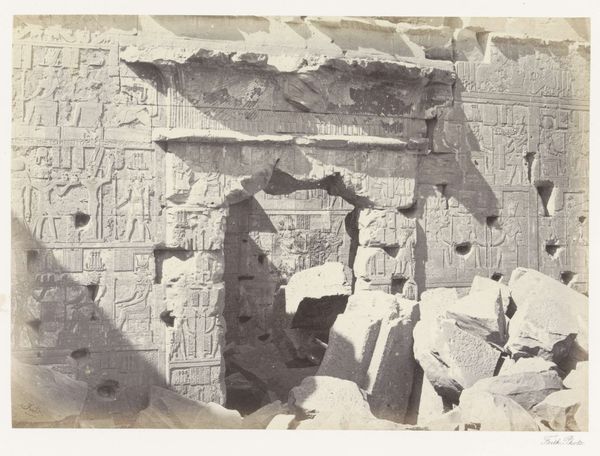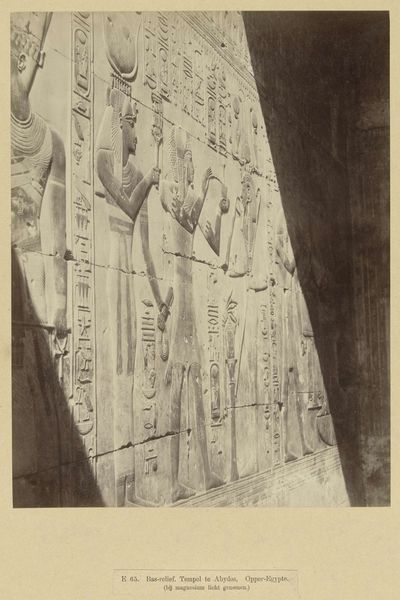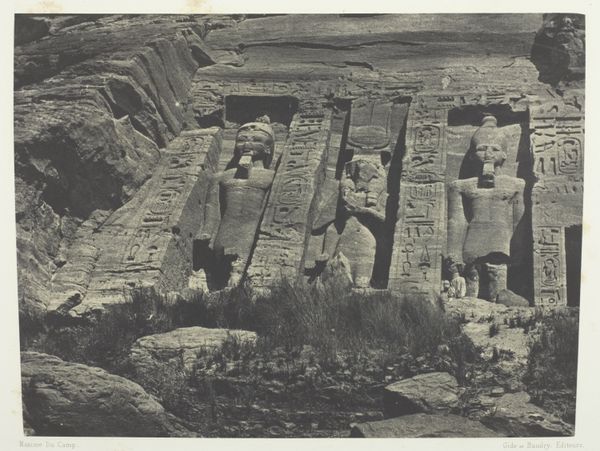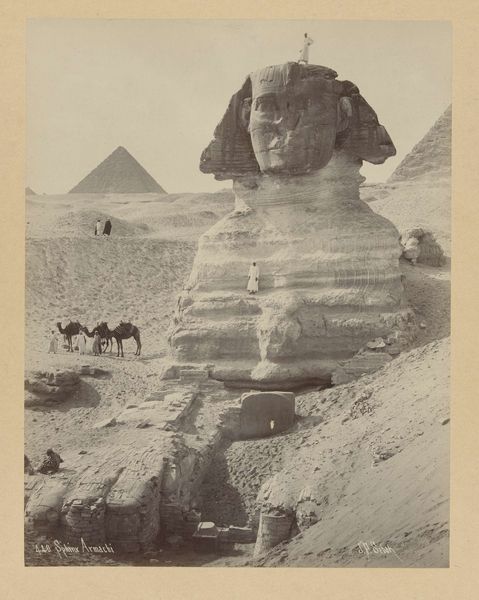
photography, sculpture, gelatin-silver-print
#
portrait
#
statue
#
landscape
#
ancient-egyptian-art
#
photography
#
ancient-mediterranean
#
sculpture
#
gelatin-silver-print
Dimensions: height 276 mm, width 225 mm
Copyright: Rijks Museum: Open Domain
Curator: This fascinating gelatin silver print, created around 1870-1890 by C. & G. Zangaki, presents a monumental sculpture: a depiction of Pharaoh Ramses II in Luxor. What's your first take on this historical scene? Editor: Striking! The photograph exudes a certain stillness. The stark light and sepia tones contribute to an aura of timelessness. Curator: The power dynamic between colonizer and colonized is subtly, yet significantly, encoded. The framing by the Zangaki brothers, likely of Greek origin, highlights the western gaze imposed on Egyptian cultural artifacts. We must examine how such images, distributed widely, shaped Western perceptions of ancient Egypt, often detaching these objects from their original sociopolitical context. Editor: Absolutely. The very act of photographing and distributing this image recontextualizes Ramses, turning a symbol of Pharaonic power into an object of colonial study and consumption. And who is the small figure at the foot of the statue? He seems almost dwarfed by Ramses' imposing scale and posture. Curator: Probably a local guide or worker. This contrast in scale reinforces an orientalist narrative—casting the West as the observer and Egypt as the observed, a land of imposing, ancient wonders inhabited by figures seemingly frozen in time. It also reminds us of labor relations surrounding archeological digs at this time, and which populations were often ignored or erased entirely. Editor: Looking closer, the cracks and eroded surfaces speak volumes about the passage of time. The monumental statue stands within a ruin, a testament to the grand, often destructive sweep of history. There is something inherently melancholic about viewing an effigy to temporal authority when confronting so many signs of decline. Curator: And consider the power of the gelatin silver print itself. The reproducibility of the medium meant this image could be disseminated widely, further shaping not only academic understanding of ancient Egypt but also impacting popular culture's understanding and portrayal of its civilization, and perhaps justifying cultural domination under the guise of preservation and documentation. Editor: This photo then, in its seeming simplicity, layers so many threads concerning power, representation, and cultural encounter, asking as many questions as it answers. Curator: Precisely. I see a silent dialogue, still resonant today.
Comments
No comments
Be the first to comment and join the conversation on the ultimate creative platform.
